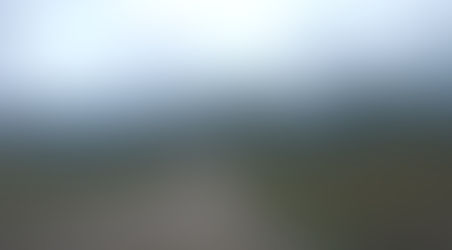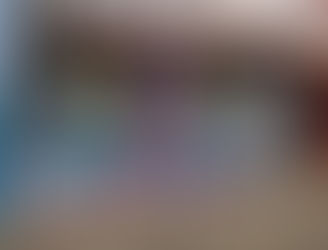Northern Peru: Trujillo / Chiclayo / Túcume/ Piura/ border crossing with Ecuador
- asiaquentin
- 7 mars 2018
- 7 min de lecture
So that’s why we’ve left in the direction of summer and Trujillo, city known for its ruins of Moche and Chimu civilizations. There are two big sites located right next to the city, Huaca del Sol y La Luna (we had seen a great documentary before leaving Europe) and Chan Chan.

We’ve spent 2 nights in a hostel in the city center (where Quentin came across a party animal we’ve met in Cusco, who now became his best friend and who explained us that life on Earth was brought by aliens) and a week in a peripheral beach town: Huanchaco.
First impression on Trujillo? Well, we’ve arrived at night...surroundings where we’ve passed were really dirty and ghetto-like. The roads are in very bad condition and the houses (that weren’t constructed with the best materials to start with) seems sloppy...

In fact last year the northern Peru was hit hard by the phenomenon El Nino and it takes a lot of time to reconstruct (as mentioned before, the country is very centralized and little money arrives up north). The further you go in this direction, the more of dirt roads you’ll find, even where the good roads used to be before.
And another thing, not sure if it’s El Ninio related, but the north of Peru is a real dump. Garbage trucks rarely pass, so garbage bags stay long time on the streets corners and often get scattered by stray dogs.

We don’t have much to say about Trujillo, it is there 3rd city of the country but the center is very small. And very few people can be seen walking around. Even few days before the Pope's visit the city seemed deserted. Because of that reason we couldn’t see Plaza de Armas for example, cause was beeing renovated before the D-day (and almost all of it was the last-minute repairs).
Huaca del Sol y de la Luna.
Constructed by Moche civilization, roughly between the year 100 and the year 700 AD. J.-C. The site is really impressive and consists of 2 adobe-brick pyramids located south of Trujillo. We’ve started with a quick tour in the museum built on the site, where you can see a lot of ceramics and other relics from this period. After which we did a guided tour (mandatory in the site) of the huaca (temple in quechua) that is open to visitors. The excavations having begun not that long ago, we can still see the pigments of the painted walls which have just been restored.
Chan Chan. Constructed by Chimu civilization, who ruled on this territory from 1000 to 1470 AD J.-C. This huge archeological site used to be the capital of the kingdom. It consists of palaces whose complex architectural organization reflected the social organization. The specific areas of the palace were restricted to specified social classes, even the corridors size varied according to the number of authorized people. There were even specific ceremonial spaces according to the one’s caste, where the acoustics of the site allowed transmitting messages from inside (the nobles) to outside (common people).
The residences were abandoned after the death of the king, the new king then built a new site that would serve as a tomb to him and to all the inhabitants dead during his reign. They were constructing a new capital every time. During times of this civilization 10 different complexes were built on a site of 600ha and only one of them is open to public. The problem is that there is very little or no more money invested in these archeological sites. The temples are not searched / restored / protected. You can see trash dumps between some of more degraded temples and remains after grave robbers “work”.
It is a bit mind-blowing that this places are little known, even though they are located near the 3rd largest city (easily accessible and close to hotels), just near the coast and surfing beaches, so perfect for tourism. This place could become a major site in South America but there are no investments, yet it would surely be quickly reimbursed by the visits. To reach Huaca del Sol and Luna from the center of Trujillo:
- By taxi it's between 10 and 12 soles
- By bus, which leaves from Avenida de los Incas (crossing with calle Huayna Capac), it is necessary to make sure if it goes up to the end of the road (pyramids), or if it stops in the village (long walk) , 1.5 soles per person
To reach Chan Chan from the center of Trujillo:
- By bus, which leaves from Avenida Espania (crossing with Independencia), line C where H. It’s necessary to ask the driver to stop at the entrance of the site. The bus continues up to Huanchaco village
Huanchaco We were really lucky because there was almost no tourist in the town (it wasn’t the same thing 3 weeks later according to Quentin's brother). The relaxed atmosphere of this surf village was really nice. We found a really cool and cheap Airbnb and what’s more, the nearest restaurant served a lunch menus (soup / main course /fresh fruit juice) for 6 soles (1.7 €). In short we spent there a really nice week.

But this calm atmosphere was there only thanks to the Pope who came to do a mass on the town’s beach the next day after we’ve left… for the crowd of 1 million people. During the week we’ve spent there the village was in full effervescence of preparations, but almost all of the habitual visitors fled the religious atmosphere. We’re not much into that stuff as well, so we’ve decided to go to Chiclayo, where we’ve found a woofing opportunity that sounded really cool ... (we should’ve choose the religious craze though...) Chiclayo Not much can be said about the city, there's nothing to visit, it's not beautiful. It is very likely the ugliest city in the whole country. The nearby seaside is ok: Puerto Eten with its desert beaches full of birds and Pimentel, a typical seaside resort, both 30 minutes by car.

We’ve found a 2 week woofing in a language school run by a young couple (German / Peruvian). Asia was supposed to teach and Quentin work on their new website, promotional video creations and marketing.
Well, for Asia it wasn’t a great experience, there were not that much students at that time (we didn’t know that’s the middle of the summer holidays, luckily kindle was there to help). And the problem for both of us was that we had really hard time bearing with our hosts ... The German girl spent her time criticizing Peru, the Peruvians, the city, the local culture, the food ... she was afraid of everything. Her boyfriend was an egocentric manipulator who spoke very badly to his girlfriend. In short it wasn’t the best atmosphere, we didn’t have that much in common and it was pretty difficult to find conversations topics. Fortunately, few days before we’ve left, two other volunteers arrived to cheer up the atmosphere. On the other hand, during this time, Quentin was able to learn new things in terms of programming and website creation and Asia was able to organize few conversation clubs with super-friendly Peruvians (who had nothing to do with the image presented by the school manager).

Other good thing about this woofing was that otherwise we would’ve never visit Túcume. Situated south of the La Leche River on a plain around La Raya Mountain, was a major regional center, maybe even the capital of the successive occupations of the area by the Lambayeque/Sican (800-1350 AD), Chimú (1350–1450 AD) and Inca (1450–1532 AD).

It covers an area of over 540 acres (220 ha) and encompassing 26 major pyramids and mounds. It’s situated in the Lambayeque Valley, the site of scores of natural and man-made waterways and is also a region of about 250 decaying brick pyramids.

Local shaman healers (curanderos) invoke power of Tucume and La Raya Mountain in their rituals, and local people fear these sites. The area is referred to as Purgatorio (purgatory) by local people. Hardly anyone other than healers venture out in this site at night.
What was the most surprising for us is that in this complex, situated off the beaten touristic tracks hosts the best-made museum that we’ve saw in Peru: use of multimedia and other interactive methods, correct translations in English (?!), interesting content and architecture.
After the woofing we didn’t know if we would continue on the Peruvian coast or if we go directly to nearby Ecuador ... We didn’t want to leave Peru with the last negative experience, but we were really tempted by the trees and greenness!
The decision was made: direction Ecuador, but before we’ve spent 2 nights in the city of Piura, in mode "post woofing decompression". After that we’ve took Piura-Cuenca bus with the Azuay company, which allowed us to cross the border during the night. Once again we could feel the effects of El Nino from last year: the road is simply horrible. You can literally feel the difference, when spin-dryer like road experience is replaced by the smoothness on Ecuadorian side. That was as well the first "terrestrial" border crossing for Quentin.

It’s worth noting, that the most secure method is to cross this border by bus. Since the nineteenth until the end of the twentieth century, the two countries fought for the border (Peru, being a very large country but with only 3% of cultivable land, targeted the fertile lands of their neighbors and the large port of Guayaquil). So in terms of compromise the border post is located on a "no man’s land” zone. So it's safer to go here on a bus (in addition, all nightly formalities are carried out quicker), than to try to go by yourself (if you have been robbed at a territory that does not belong to anyone it's really hard to look for justice ... at least an official one ... and there's a lot of histories about taxis that threaten to leave tourist in the middle of nowhere if they don’t pay 30 instead of 5$ agreed before).






























































Commentaires